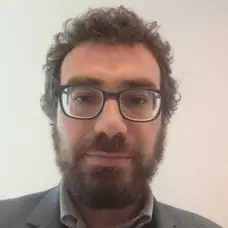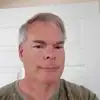










Os vencedores foram escolhidos!
Os vencedores foram escolhidos!
Com 61 entries de 40 freelancers, o titular desse concurso teve o trabalho feito por $20.000 USD em 110 dias.
Challenge Overview and Objective
Innovative solutions are urgently needed to detect, characterize, track, or remediate small debris to ensure the safety and sustainability of space operations.
YOU NEED TO FILL OUT THE REGISTRATION FORM AND BE REGISTERED ON THE FREELANCER.COM PLATFORM BEFORE SUBMITTING THE SOLUTION
This competition invites creative minds from around the world to contribute groundbreaking concepts that address the critical issue of small debris in Earth's low-earth orbit (LEO) environment. Low-Earth orbit (often known as LEO) encompasses Earth-centered orbits with an altitude of 2,000 km or less. Low-Earth orbit is considered the area in Earth orbit near enough to Earth for convenient transportation, communication, observation and resupply. This is the area where the International Space Station currently orbits and where many proposed future platforms will be located.
The challenge defines these four capabilities in the following way:
The focus is on scalable solutions that can address a substantial percentage of the small debris population. Participants are encouraged to think creatively, considering technologies, orbits, and operations that may be less explored but have the potential for significant impact.
Users will register and submit a concept paper addressing a single Challenge domain and build out solutions to address one of the three prize categories as part of the $120,000 prize purse.
1st place award will be at a minimum $20,000.
Detect & Characterize
The current state of the art in detecting and characterizing small space debris involves radar systems, optical telescopes, and data fusion algorithms. These technologies provide valuable information about the size, shape, and distribution of large debris objects; in particular, radar has proven useful to detect objects of size 10 cm and larger[1]. A potential approach involves measuring slight movements in larger objects, such as large space debris or operational satellites, to detect smaller objects that would otherwise go unnoticed;[2] but this is far from the only plan of action. A successful concept paper should provide an overview of the proposed detection system and how it would deliver real-time, accurate data on debris orbits and their physical properties.
Key types of attributes that would help with the detection and characterization of space debris include:
Key questions to address include:
Track
Tracking small space debris involves continuous monitoring of their positions and trajectories to maintain custody over the objects. In this context, "custody" means that the observing sensor has the capability to view and track the specific space object at any given moment. To build a feasible solution, improvements in sensor capabilities might be necessary for accurately tracking even the smallest debris fragments. Additionally, the development of predictive models that consider gravitational perturbations and atmospheric drag may enhance tracking accuracy. A viable solution, if implemented, should be capable of maintaining custody of small debris objects for a range of prioritized orbits.
In the context of space debris tracking, it's important to note that the methods currently in use represent established approaches, but there's room for innovation and novel solutions, especially when tracking small space debris. Two prominent techniques are "Stare and Correlate" and "Stare and Chase." "Stare and Correlate" involves continuous monitoring of specific regions in space while correlating multiple observations over time to estimate object orbits. In contrast, "Stare and Chase" combines continuous tracking with targeted adjustments, refining trajectory predictions. It allows sensors to focus initially and shift to track objects, enhancing tracking accuracy and collision avoidance. Another method is "Fence Mode," a radar tracking approach sweeping a larger space area to detect various debris. While efficient for broad surveillance, it may compromise accuracy due to atmospheric interference and resolution limitations.
In the context of tracking small space debris, several significant challenges emerge, which can be exceptionally challenging due to small space debris’ low reflectivity. These objects typically have a minuscule radar cross-section, meaning they reflect very little of the radar signal sent to them. Consequently, the signal received by sensors is weak compared to background noise, making it difficult to detect and track these objects.
Additionally, the orbits of small space debris can be dynamic and non-Keplerian; they are influenced by a multitude of factors, including atmospheric drag and space weather effects. Lower altitudes are particularly affected by atmospheric drag, causing objects to gradually lose altitude over time. Space weather, such as solar radiation and geomagnetic storms, can also impact orbital dynamics, introducing unpredictable changes in an object's path. These factors create complexities in tracking and predicting the positions of small debris objects.
Key questions to address:
Remediate
Remediation of debris is any action to reduce the risks associated with orbital debris by moving, removing, or reusing it. This aspect of the challenge seeks a reduction in the quantity of, or impact risk of Small and Very Small objects in the LEO regime. Current approaches for remediating small space debris include implementing active debris removal missions. One of the main challenges of small space debris remediation is the balance of cost and benefit, as many potential solutions are not of proper scope[3]. A successful solution should offer practical and cost-effective strategies for reducing the overall existing small debris population, mitigating the risk of collisions and maintaining the sustainability of orbital space.
There are some strategies and concepts that have been developed to address the debris remediation challenge each with strengths and weaknesses. In the “Laser Nudging” method, ground-based or space-based lasers impart momentum to push the object. Lasers may be a viable solution for small debris, provided their operations can be scaled to a very high frequency of debris item interactions. Experimental methods like debris-slowing using “space dust” have been proposed by deploying micron-scale dust, leveraging the physics of hypervelocity dust/debris collisions to reduce momentum and accelerate the reentry of debris, however the concept has not been demonstrated in a lab[4]. Additionally, the use of a Perimeter-Ring-Truss type of shield system to create a large orbital debris “surface” that, once deployed in a target orbit, would be capable of gathering high-velocity debris has been proposed[5].
Most current remediation strategies for Large (10cm+) orbits involve Deorbiting or Moving techniques that alter the trajectory of the debris, either guiding it to burn up into Earth’s atmosphere or repositioning it into a graveyard orbit. Current remediation solutions may appear viable however they run into scalability challenges when dealing with Small and Very Small pieces of space debris.
In the “Active Tug” method, spacecraft equipped with magnetic or mechanical grapple instruments approach and nudge the object. Active tug is likely not a viable solution to address the small debris challenge due to issues with scaling to remediate the large quantities of debris items, and the fuel cost required to maneuver between hundreds of thousands of pieces. Even if current removal methods were feasible on a case-by-case basis, the cost of such a project would far outweigh any benefits.
A comprehensive solution to the remediation problem domain should propose a method that:
Excluded Concepts
This challenge does not seek concepts addressing debris smaller than 1 millimeter or larger than 10 centimeters. Furthermore, solutions that solely improve post-mission disposal plans or mitigate new debris creation are not within the scope of this competition.
-----------------------------------------------------------------------------------------------------------------------------------
Challenge Background
Earth's orbital environment is marred by a growing population of space debris, colloquially known as "space junk." While larger debris is tracked by the US Space Surveillance Network (SSN), smaller objects with diameters between 1 millimeter and 10 centimeters are not tracked—or detected. The millions of such objects in Low Earth Orbit (LEO) can strike active spacecraft at very high velocities and pose a significant collision threat to both human spaceflight and robotic missions.
The Problem
The current Surveillance Network cannot effectively track and monitor small debris pieces. Therefore, innovative solutions are urgently needed to detect, characterize, track, and remediate small debris to ensure the safety and sustainability of space operations. Space debris encompasses defunct satellites, rocket fragments, and smaller debris traveling in Earth's orbit.
Space debris travels at incredibly high speeds, creating a significant collision risk for operational satellites, the International Space Station (ISS), and other valuable assets in orbit. Even a tiny fragment can cause catastrophic damage due to its kinetic energy. As space gets more crowded, the number of expected collisions with Small (1cm - 10cm) and Very Small (1mm - 1cm) space debris will increase tenfold in ten years[1]. Finally, collisions between space debris and operational satellites can generate even more debris fragments, triggering a chain reaction known as the "Kessler syndrome." This could lead to an exponential increase in the amount of debris and make certain orbits unusable.
The tasks of detecting, characterizing, tracking, and remediating small space debris require solutions that address the physical nature of the problem. The high relative velocity of the objects complicates their tracking, while the sheer number of such objects presents scalability concerns. The challenges and uncertainties in tracking the 18,000 Large space debris objects indicate that minor enhancements to current methods might not be adequate for tracking the 1 million smaller debris objects.
These small fragments may seem inconsequential, but their cumulative impact can have severe consequences. The ability to detect, characterize, track, and remediate small space debris is imperative to the sustainability of space operations for the following reasons:
Accurate detection and tracking help prevent collisions between operational spacecraft and debris, minimizing potential damage and risks. Collision avoidance not only safeguards valuable assets but also plays a pivotal role in ensuring the long-term sustainability of space exploration and satellite operations.
With detailed data about the size, velocity, and distribution of debris fragments, engineers can design spacecraft components that are more resilient to potential impacts. This informed design approach enhances the overall safety and durability of spacecraft, reducing the risk of damage from even tiny debris particles.
-----------------------------------------------------------------------------------------------------------------------------------
In the Files section we included a complete Rules and Requirements document and additional resources for you to review. Please refer to the “Quick Biblio” document to navigate the additional articles and papers that relate to each challenge area.
Habilidades Necessárias
Aeronautical Engineering
Aerospace Engineering
Aircraft Performance
Aircraft Propulsion
Aircraft Structures
Aircraft Systems
Astrophysics
Computer Vision
Control System Design
Materials Engineering
Materials Science
Mechanical Engineering
Optical Engineering
Physics
Remote Sensing
Robot Operating System (ROS)
Robotics
Robotics and Cognitive Automation
Structural Engineering
Formatos de Arquivos Aceitos
pdf
Quadro de Esclarecimentos
Não é permitido spam, autopromoção ou propaganda.
Quadro de Esclarecimentos

I received an email about who won the contest and it had a link where we could view the winning entry, but that link does not seem to work. A) I would like to see the winning entry so as to better understand what the judges were actually looking for as relates to future contests from them in this field. B) The prizes showed that there were to be places 1st through 5th for all 3 categories on this contest. That would mean there should be 15 "winners", but the email stated only one name as winner. Are the other 14 winners going to be announced and are we going to be able to see those winning entries also? Thx

Dear participants,
Thank you for your patience as we were selecting the winners of the Detect, Track, and Remediate Challenge! We hope you had a great holiday break and enjoyed the time with your loved ones.
We are currently finalizing the results of the judging and preparing for the awards. We anticipate to notify the participants about the decision by the end of this week and start awarding process early next week.
Thank you! Have a great rest of your week.

Hi, when are you going to start awarding, if you don't mind? Thanks.

My development contained the solution of three tasks, but due to the commonality of the context, I presented it in one document. The document also contains various sections that solve individual tasks.
I also followed the instructions from "Q&A Tracker/Q8" and submitted it with three Entries (Or rather I did, because I read about it elsewhere, but now I noticed the Q8.). But my submissions were removed due to uniformity.
But this does not correspond to the answer "Q8" where it is said that this can be done.
So I submitted my work as one entry, even though it solves 3 tasks.
I hope this will be taken into account.
Thank you.
A
The competition says it still has about 4 more hours till close, is that not correct?
O
Organizador do Concurso
·
The Challenge is now closed. Thank you everyone for participating! We will be in touch with everyone who submitted very soon. Stay tuned for winners announcements!

Hi,
I just posted my 2 entries, but at least on my screen in the entries tab, instead of showing not my headshot picture there, but is showing part of the first page of my sketches of my entries themselves. I don't think that is right, I don't really want those showing, right? Something went wrong?
H
Hello,
Is it possible to submit more than one entry for each track? I read the rules and I know it is possible to submit entries for more track, but is it allowed to submit more totally different entries for the same track?

Missed the webinar? Not a problem!
If you couldn't join the webinar on Friday, make sure to watch the recording! It is already available via this link: https://www.youtube.com/watch?v=qJHdlKq7WGY&ab_channel=Ensemble
If you have any questions, make sure to post them on the Clarification Board or email us at nasa@freelancer.com and our team will be happy to help you as we approach the submission deadline in 2 weeks.

Hi , is Singapore a designated country. can i participate if the team leader is from Singapore ?
Outros concursos semelhantes
$131,00 USD
Publicado por radek2
$164,00 USD
Publicado por KDoggNDE
$149,00 USD
Publicado por timbcella
$10,00 USD
Publicado por bilalnourr
$161,00 USD
Publicado por romztknot
Ver Mais
Concursos concluídos
$1.500,00 USD
Publicado por xiangbobbyren
$1.000,00 USD
Publicado por iLikeRice
$501,00 USD
Publicado por mwlsn11
$650,00 USD
Publicado por vw593521vw
$1.609,00 USD
Publicado por tourismus73274

